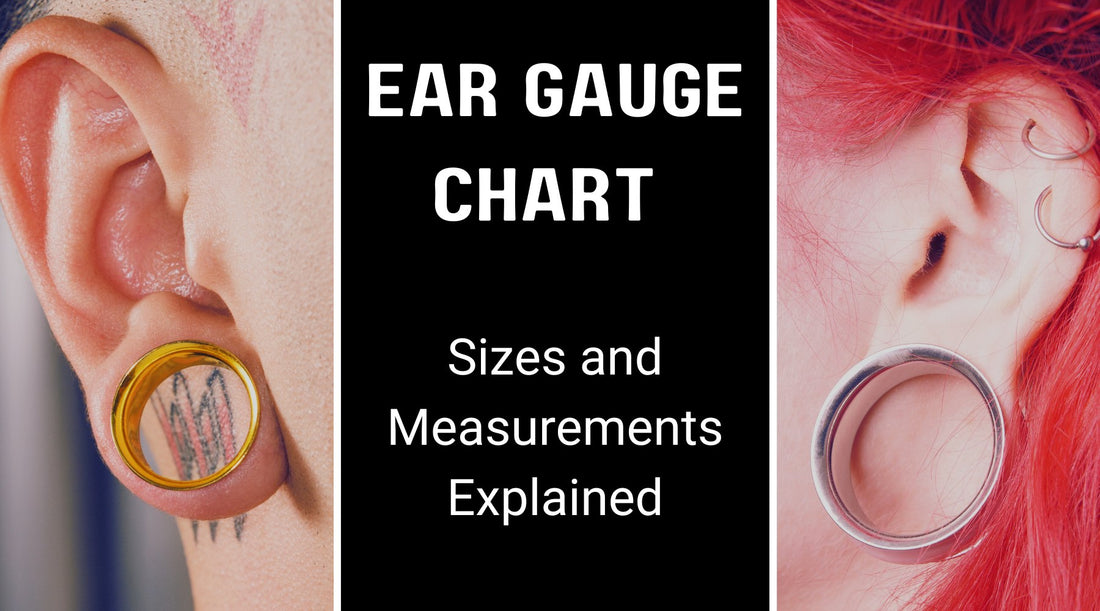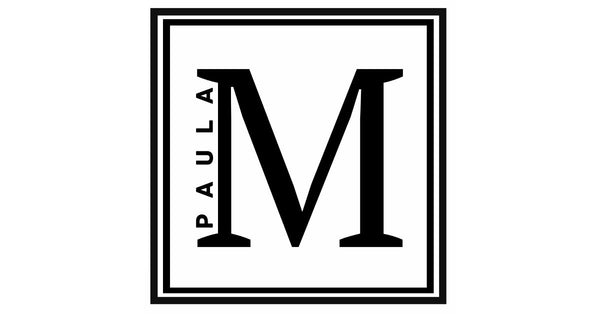
Ear Gauge Chart: Sizes and Measurements Explained
Share
Ear stretching is a popular form of body modification and self expression. Whether you are new to ear gauges or a seasoned pro, using an ear gauge chart is useful for understanding gauge sizes and measurements.
The gauge chart is important for choosing the right size to help you achieve your ear stretching goals and monitor your progress. It's also useful when you're ready to select trendy ear plugs and tunnel jewelry.
Understanding the Basics of the Ear Gauge Chart
Understanding the sizes of ear gauges can be confusing. The standardized gauge system uses different units of measurement, specifically the gauge size, millimeters and inches.
Gauge size is referring to the thickness or diameter of the plug. This is where it gets a little confusing because the gauge size decreases as the diameter increases, but if you understand the following 3 tips it should be easier to use the chart:
- The larger the gauge size the smaller the diameter. Gauge sizes start at 18g (smallest 1mm) all the way to the larger diameter size 00G (10mm)
- After 00g the gauge sizes switch to being measured in fractions of inches
- If in doubt, use the millimeter conversion measurement provided in the chart for accuracy.

Save time - download your free printable ear gauge chart and keep it handy. Get it here: Ear Gauge Printable Chart
It is important to understand the sizing chart to allow you to plan your ear stretching journey. Using the correct sizing is essential for comfort and to prevent infection or injury. It is very important to stretch your ears slowly and take your time before progressing to the next size.
How to Use the Ear Gauge Chart for Sizing
Finding Your Starting Size
To find your starting gauge size you can measure the gauge that you are currently using. You can do this by using a caliper tool to accurately measure the diameter (in millimeters) of the gauge.
Alternatively, you can consult a professional piercer who will be able to take the measurement for you, and provide guidance on getting started with ear stretching.
Incremental Difference Between Sizes
The size difference between ear gauges varies. For example the incremental difference between 4g (5mm) to 2g (6mm) is 1mm, but from 2g (6mm) to 0g (8mm) is 2mm, which is a significant difference. Be aware of these size differences as you plan to reach your stretching goal, and allow the time needed to reach your ideal size gradually.
Why Use An Ear Gauge Chart?
I hope you find this guide and the ear gauge chart useful. It is an invaluable tool for anyone interested in using gauges or plugs. It helps you understand the different sizes and measurements and helps you plan your ear stretching journey.
It is also helpful once you have reached your stretching goal to use the ear plug size chart to assist you in your search for fun and unique tunnel plugs and dangle ear tunnels.
Woodland Butterfly Ear Gauge Dangle Earrings
Have any questions? Leave them in the comments below. Don't forget to share this post with friends who might find it helpful, and subscribe to my mailing list for more tips and guides about unique fantasy jewelry.






